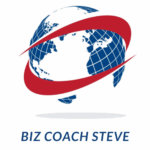When a business’s culture stagnates and complacency sets in, performance declines, growth stalls and existing customers sense the lack of drive and erosion of value occurs. In many situations where a business has lost its drive and is backsliding, the cure it to reset to a performance-based culture. This is a move that can have a significant impact on the organizations long-term financial performance.
But how to instill a performance-based culture as a means of improving a product or service and concentrating on three main components: Goals, Incentives, and Measures.
Have you ever noticed the companies that are consistently growing are always changing? Having a strong culture to keep inventing is usually directly correlated to consistent growth. That culture starts with leadership but can diminish over the life of the business as other coefficients of culture become more powerful. Undoubtedly, a company’s culture is impacted by many factors. Sometimes corporate culture is nurtured by involved and caring management where it flourishes and sustains, while other times the culture gets dinged and damaged over the years to the point of being unrepairable. Among the many no-so-positive factors that might harm the culture are: major restructuring, mergers and acquisitions and frequent changes in leadership at the corporate level.
Mission Drift: Businesses naturally evolve and change. Executives, staff and customers come and go. Change and evolution are good and to be expected, but over time, businesses can experience “mission drift.” When a business starts it is focused on its mission, as the business grows the organizations workforce expands with the business’s growth. Roles change, key resources stretch to take on new responsibilities and try to transition their knowledge about their old role to someone else. Mis-interpretation creeps in, so does improvisation.
The original organizational culture has changed, it gets diluted as fresh blood gets pumped into the environment. This is also when the culture transforms, sometimes positive with new ideas and innovation. The key is to stay in check and preserve the core mission of the business, but yet keep it moving forward.
Relentless Charge: Expansion creates fatigue and burnout within the organization and can also lead to an exhausted and ambivalent workforce that is detrimental to growth, innovation and operational excellence in the business. This does not mean that a business should not push ahead, or coast along and slack-off. It does mean that we must have a formula to fuel the business for the long-run. Think in terms of running a marathon and not a sprint. The formula must be mixed with the new culture and be attuned to the business’s strategies and goals.
During boom times, business leaders must listen to the signals the business is sending to them. Organizations get tired and need rest cycles as well. Not like us humans need to rest, but the business cannot endlessly expend energy with replacing it along the way. Business cycles go in spurts of work and then rejuvenation. Constant full-speed accelerations without maintaining the organizational pistons will wear out the engine and momentum will slow. A balance is needed between the need to constantly move the organization forward and the need to recharge energy and celebrate successes along the way.
Complacency: One of the biggest enemies a business culture faces is complacency. Complacency can come from having reached a level of comfort that accompanies some degree of achievement and feelings of success. Sometimes when an organization reaches a significant milestone the employees throughout the company sometimes gravitate towards a place where it is comfortable and safe. Why risk what we’ve works so hard for? Complacency develops out of our natural desire for the predictability of a routine over the uncertainty of change.
The primary issue with complacency is that we cannot remain in a fixed position with the external environment is moving and changing. This guarantees that the organization will be passed by competing businesses that embrace change. Businesses that do not systematically strive for improvement and growth will plateau, stagnate and then decline. Those businesses that continue to reach beyond the status quo and adapt to evolutionary changes in their environment will thrive.
Strong leadership during growth periods is essential to curtail dilution and avoid organizational complacency. Non-proactive leadership during a growth period can slowly erode confidence throughout the organization and lead to complacency and disconnectedness. It may seem counter-intuitive, but these outcomes are exposed when people begin to focus on the wrong things as a result of the business-essential tacit knowledge held by the original core team being stretched and worn thin. Some workers may begin to feel overworked, while others may feel underutilized.
So, what do you do when your organization’s culture has been pummeled and is no longer reflective of the workplace that it once was?
What’s your ideal target? Clearly, a broken culture must be addressed by changing it, but that requires a vision of the target culture be in place before attempting any transformative actions as well as a realistic plan for change. Ultimately, the goal of the culture reset is to create a strong and positive culture that is well-aligned with the organization’s core values.
A strong organizational culture is one that is extremely well aligned to a common set of core values, making policy and procedure changes easier to introduce. However, rigidity and group think are two rick factors that accompany strong organizational beliefs and corporate dogma. Having a strong culture is certainly preferable to a weak one but is not entirely the optimal situation.
A healthier model is a performance-centric culture, striking a balance between the desirable attributes of a strong culture and the equally important ingredients of goals, incentives, measures, flexibility and acceptance. A performance-centric organization allows for and promotes diversity in thought and business innovation but does not tolerate complacent behavior. These organizations have developed a corporate structure that promotes accountability and rewards performance target achievements, while accepting and embracing challenges to the status quo. Bureaucracy and group think are viewed as the demons of innovation that must be kept in check in order to allow fragile new and game-changing business ideas to survive and one day be implemented. Research has shown that organizations with performance-centric cultures experience better financial growth.
The Reward: A culture with a bias for action: Make no mistake, transforming a culture is not easy and requires an organization to seek change. Unfortunately, an organization in mission drift, exhausted from the relentless charge and/or suffering from complacency is not an ideal patient to respond quickly to any treatment. Conditions that developed over a long period of time will require a careful and paced culture change program as opposed to an attempt to introduce quick fixes that create more disruption and distraction. Those organizations that succeed in change the rewards are enormous.
Realizing the benefits: Performance-based cultures unify employees and naturally bridge the organizational gaps such as hierarchy or geography. In a performance-based culture, the organization feels and behaves much like a family. This commitment helps guide employees to do the right things right and strive to advance the business in the absence of explicit direction.
Perhaps most importantly, employees in performance-based cultures demonstrate a marked bias for action remaining fundamentally dissatisfied with the status quo and thinking and acting more like owners of the business. They show accountability and take personal responsibility for overall business performance and not just their own domains. As such, the culture tolerates very little bureaucratic debate and expects team players who display high levels of passion and commitment to achieving organizational goals.



